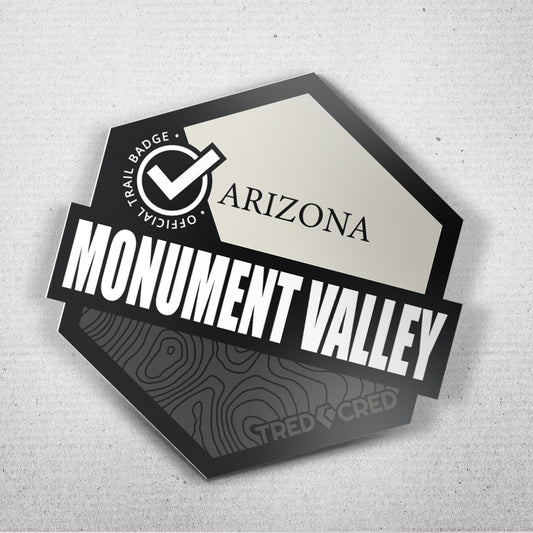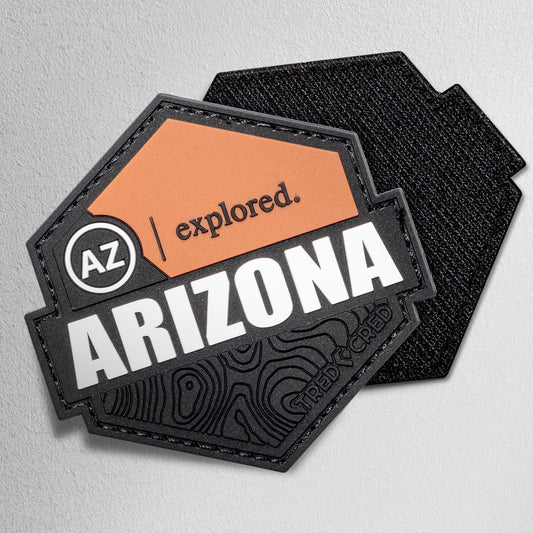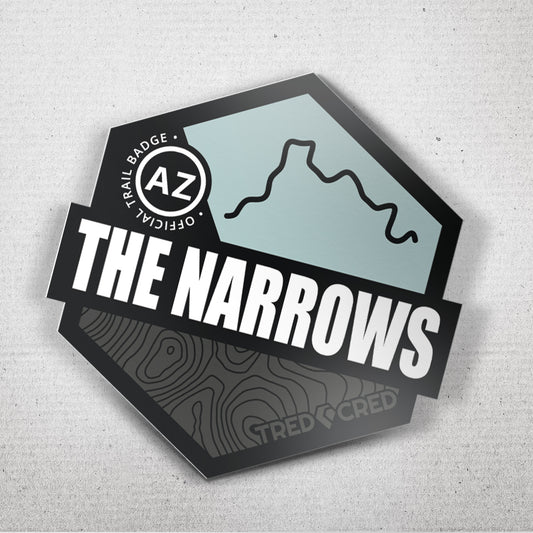Volcanic Playground: Cinder Hills OHV Area Offroading Trails Near Flagstaff
Share
Trade the slow grind of rock crawling for pure, high-speed adrenaline. Cinder Hills isn't a trail; it's a massive, wide-open, 13,000-acre volcanic playground just outside Flagstaff. If your rig is built for speed, slides, and sending it over soft, unique terrain, this is your next destination. This is where you ditch the slow crawl of the red rocks and embrace the high-octane blast of an OHV open area that feels more like a lunar landscape than a typical Arizona forest.
Forget careful wheel placement and tiny articulation angles. This is about dropping the hammer, testing your desert-running suspension, and kicking up black volcanic dust that coats everything in a badge of honor. We’re talking about wide-open freedom, the roar of an engine at speed, and terrain that requires you to lean on momentum, not just low-range gearing. Get ready to explore a place unlike any other and fuel your passion for fast-paced adventure. My first time here, I expected heavy sand, but the terrain felt completely foreign—it was an immediate, thrilling challenge that reset everything I thought I knew about desert wheeling. If you're ready to find out what your vehicle can really do when the speed limits come off, this is your proving ground. Let’s dial in your rig and strategy for the volcanic playground.
The Terrain: What Makes Cinder Hills Unique
The Cinder Hills OHV Area, nestled near the dramatic landscape of Sunset Crater Volcano National Monument, is a geological anomaly. It’s what sets it apart from every other offroading area in Arizona, and it’s why the driving dynamics here are totally different. You need to understand the terrain to truly master it.
Cinders vs. Sand: The Flotation Factor
Most desert enthusiasts are familiar with deep sand dunes or hard-packed dirt. Cinder Hills offers neither. The ground here is made up of volcanic cinders—small, porous, lightweight, and incredibly abrasive black and red pebbles leftover from ancient eruptions. They look like chunky black sand, but they act much heavier and looser than typical dune sand. Think of it like trying to drive on 13,000 acres of lightweight ball bearings.
This terrain demands flotation. Unlike hard-packed trails where you need grip, here you need your tires to ride on top of the loose surface. That means your throttle control needs to be confident and your turning smooth. Any hesitation in a corner, or any abrupt braking on a slope, and you’re instantly digging a hole. I learned this lesson quickly when I feathered the throttle on a slight uphill. The rig instantly bogged down, sinking to the axles in seconds. It wasn’t a lack of power; it was a lack of momentum and tire float. This isn’t a place for the timid; it’s a place to send it with conviction.
Driving Dynamics: Embracing the Drift
Because the surface is so loose, your steering wheel will feel lighter than usual, and your rear end will be eager to step out. This is a good thing! This is where you can practice controlled slides and power-out maneuvers that are impossible on tight, rocky trails. For side-by-sides and fast 4x4s, this means you can really push your vehicle’s limits. You need to carry a good amount of speed to keep the rig "on top" of the cinders, but you must be constantly aware of what's ahead.
You’re not trying to steer; you’re trying to carve. The driving line is wider, less precise than rock crawling. Use wide arcs in turns to maintain speed, and when tackling climbs, commit to a straight path with smooth, steady acceleration. This is a dream for any driver who loves high-speed dirt biking or UTV racing.
The Cinder Cones: The Ultimate Viewpoint
The entire area is scattered with dozens of natural volcanic mounds—the cinder cones. These are the landmarks of the area, offering a challenging, steep ascent and a stunning 360-degree view of the high plateau and San Francisco Peaks once you reach the top. Climbing a cone requires commitment and full throttle, often relying on gravity to help pin your tires to the loose surface. They are the perfect natural backdrop for that trophy shot of your rig—just make sure you get up and down safely!
Rig Prep and The "Throttle-Up" Gear
The Cinder Hills aren't about brute strength; they're about minimizing friction and protecting your rig from a uniquely harsh environment. If you show up with rock-crawling air pressure and stock air filters, you’re going to have a bad day.
Traction & Tires: The Art of Aggressive Air-Down
While deep lugs are certainly helpful, the single most important factor for traction in cinders is air pressure. Forget the 18-20 PSI you used on Schnebly Hill. You need to air down aggressively to maximize your tire's footprint and create that all-important "flotation." Depending on your rig's weight and tires, dropping to 12-15 PSI is often necessary. The lower pressure allows the tire to essentially become wider, preventing the weight of the rig from cutting down into the loose cinders.
For UTV and side-by-side Arizona riders, this is where paddle tires come out to play. For Flagstaff offroading in a truck or Jeep, aggressive All-Terrains (ATs) or Mud-Terrains (MTs) with big voids are your best bet. The deep voids help scoop and compact the cinders, creating forward thrust. Without this extreme air-down, you'll feel like you're driving through thick, wet concrete.
Filters & Cooling: Cinder Dust is the Enemy
This is where the abrasive nature of the volcanic cinders comes into play. When rigs are moving at speed, they kick up a plume of incredibly fine, abrasive dust that acts like sandpaper on your engine's internals. We’re talking serious contamination risk. This is the maintenance point you cannot skip:
- Air Filters: Use a high-quality, pre-oiled foam or gauze pre-filter wrap. This is your first line of defense. Plan to clean or replace your filter immediately after this trip. A snorkel isn't necessary for water crossings here, but it can help pull cleaner air from higher up, away from the immediate dust cloud of the trail.
- Cooling System: Ensure your radiator is clean. The fine dust can clog the cooling fins, leading to overheating, especially when you’re pushing your engine hard during continuous high-speed runs or challenging hill climbs.
- Protection: Consider a good WrapLander vinyl application on your lower panels. This is abrasive terrain, and that extra layer of tough vinyl can save your paint from sandblasting.
The Cinder Sand Trap! I was leading a group of UTVs and a couple of trucks, and one guy got hung up on a cone climb. His biggest mistake? He started the climb, felt the cinders grab, and panicked, easing off the throttle. Instantly, his momentum died, and the tires dug in. Lesson learned: Momentum is your friend, but always know your limits. If you commit to the throttle on a cinder climb, commit. Backing down is always safer than digging in.
Visibility and Safety: Whips and Communication
In an OHV open area like Cinder Hills, visibility is a massive concern. A group of rigs moving at speed can create a wall of fine black dust that hangs in the air, blinding drivers behind them. This is why safety equipment is mandatory in many areas and strongly recommended here:
- Whips/Flags: A high-visibility orange flag mounted on a tall whip (10-12 feet) is essential, especially when cresting a cone or hill. It alerts drivers on the other side that you are approaching.
- Goggles/Masks: You need full-seal eyewear and a face mask to protect against the dust. Trust me, getting volcanic cinders in your eyes is not a fun way to end an adventure.
- Radio Comms: A simple handheld or dash-mounted radio is your best tool for communication. Calling out your movements ("Cresting the big cone!") drastically reduces the chance of a head-on collision. Community-focused safety is always paramount.
Conquering the Cones and Finding Freedom
Once you’re properly equipped, the sheer scale of the volcanic playground opens up. This area is built for fun, and maximizing that fun requires smart driving and respectful adherence to the rules of the Coconino National Forest.
The Volcano Challenge: Rules of the Climb
The big cinder cones are the ultimate challenge here. They often have established routes, but remember the fundamentals: Approach the climb straight on, maintain smooth, steady acceleration to keep your tires floating, and do not, under any circumstances, try to turn or stop on the face of the hill. If you have to bail, back down slowly in your tracks.
The payoff is reaching the summit. I remember watching a sunset from the top of the largest cone—the contrast of the orange light on the black cinders was stunning. It’s a moment of freedom earned not by technical prowess, but by understanding the terrain and trusting your rig’s capability to handle speed and momentum.
Boundary and Rules: Respect the Volcanic History
Cinder Hills OHV is a designated open riding area, which gives you maximum flexibility, but that freedom comes with responsibility. The area borders the protected Sunset Crater Volcano National Monument and other sensitive areas. You must stay within the marked boundaries and respect areas that have been reclaimed or closed off to motorized use. This is ancient, unique terrain, and we, as Authentic outdoor enthusiasts, need to protect it.
- Always stay clear of closed/reclaimed areas.
- Always obey speed limits when entering and leaving the main staging areas.
- Always pack out your trash. Leave nothing but tire tracks—and maybe a little volcanic dust.
Conclusion: Time to Unleash the Dust Cloud
The Cinder Hills OHV Area is the perfect contrast to the tight, technical rock crawling that Arizona is famous for. It’s pure, untamed, volcanic chaos—the best kind. It requires an entirely different skill set based on speed, momentum, and flotation, and a completely different approach to rig preparation. You’ll leave feeling like you ran a high-speed rally stage, with a layer of beautiful black volcanic dust to rep your adventure.
You’ve got the knowledge to master the cinders, from aggressive air-downs to essential safety gear. Drop the air, lock in your gear, and get ready to trade the slow crawl for the fast blast. It’s time to grab your freedom, unleash your inner desert racer, and send it into the volcanic playground!











